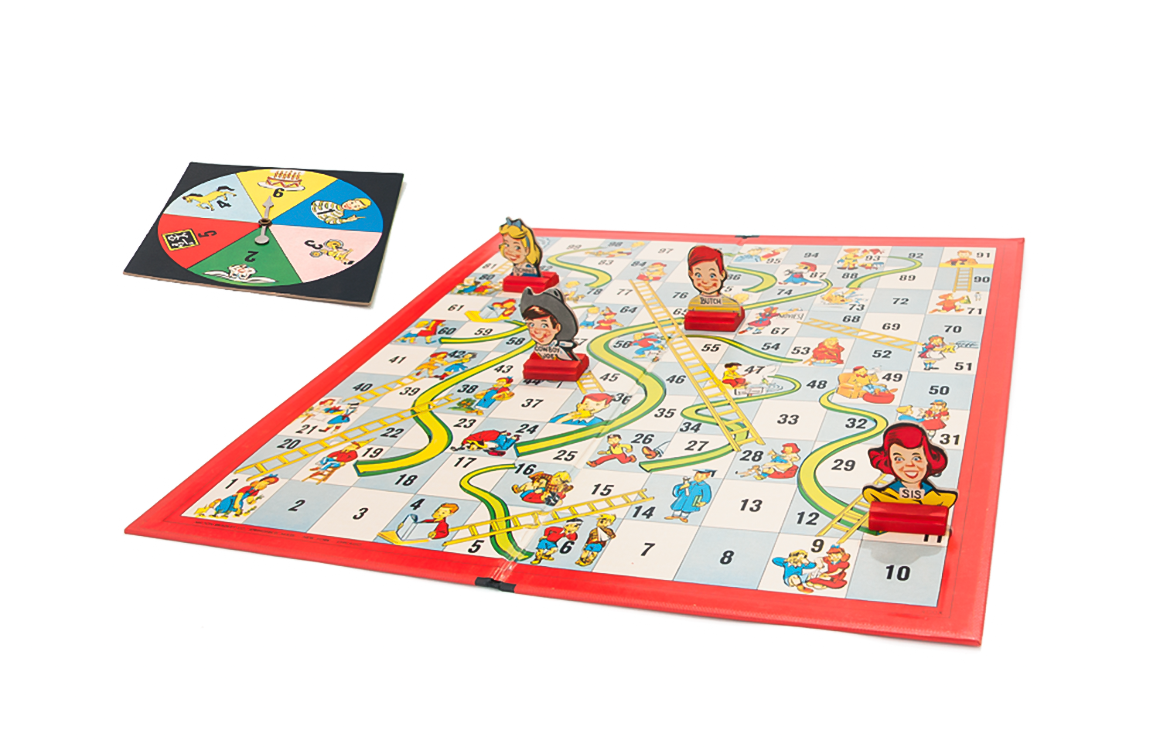Chutes and Ladders has been a hit with the kindergarten set since it was introduced in the United States in 1943, by Milton Bradley. The colorful 10 x 10 game board contains squares numbered 1 to 100. The first player to spin his or her way to square #100 at the top of the board is declared the winner. The ongoing appeal of the game lies in its simplicity of gameplay.
The concept of the game is more ancient than its 70-year history. Chutes and Ladders is based a game called Snakes and Ladders, which dates back to India in the 2nd century B.C. The original helped children learn counting and number recognition, and was also used to impart lessons in morality. Snakes were allegories for various vices, and landing on a snake’s head would cause a player to slide down the board from the top to the bottom of a snake. Conversely, ladders represented virtuous activities and players who landed at the base of a ladder quickened their ascension by climbing the ladder to bypass a number of squares.
Milton Bradley’s redesign retains the same basic premise of its historical counterpart but utilizes a more kid-friendly theme of playground equipment. Scary snakes have been replaced with chutes that perform the same sliding function during gameplay. Chutes and Ladders also takes a less heavy-handed moralistic tone, with an emphasis on good deeds (i.e. mowing the line) and bad deeds (i.e. eating too many cookies.)
Note: If you buy something using the eBay link in this story, we may earn a small commission. Thank you for supporting independent toy journalism!

